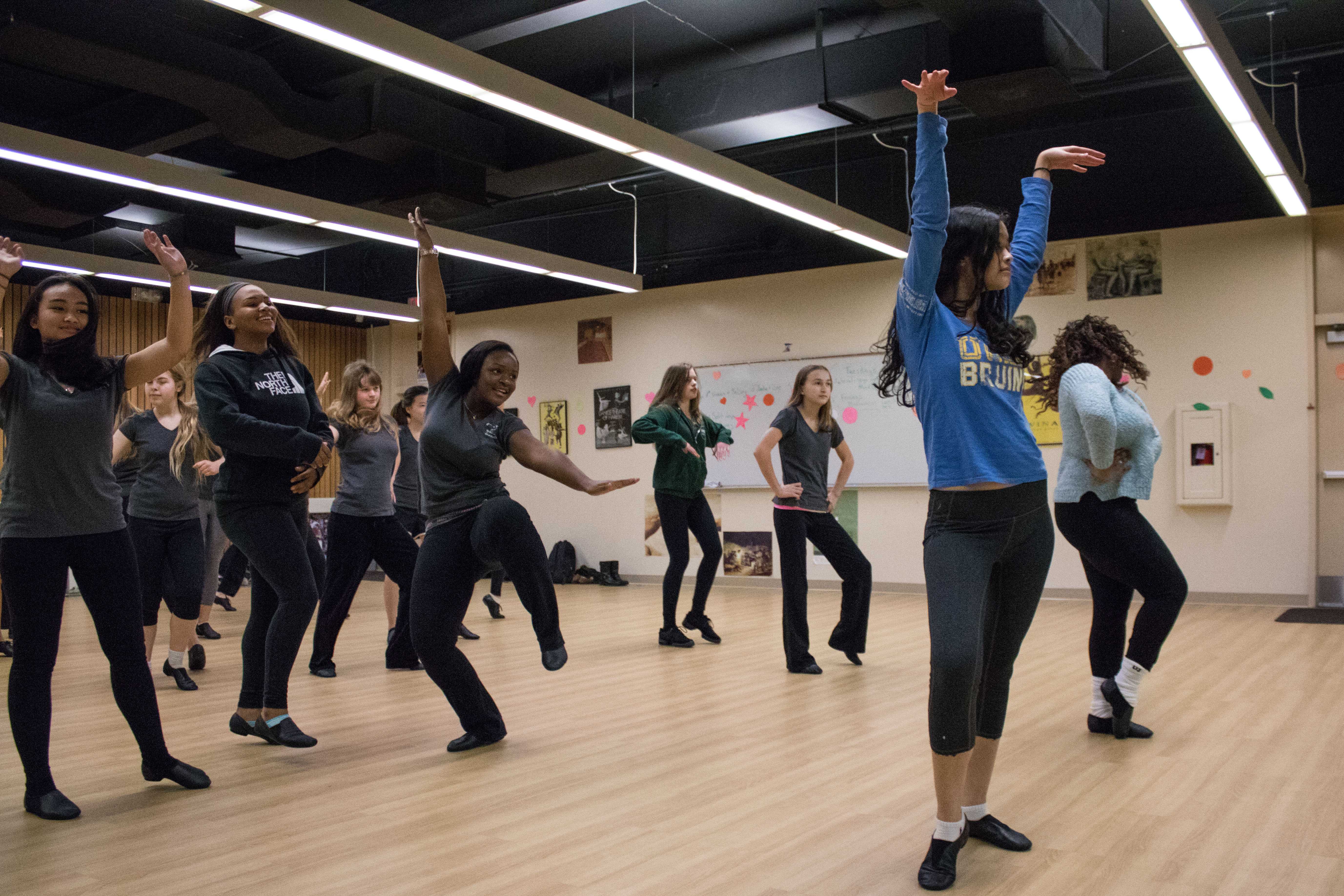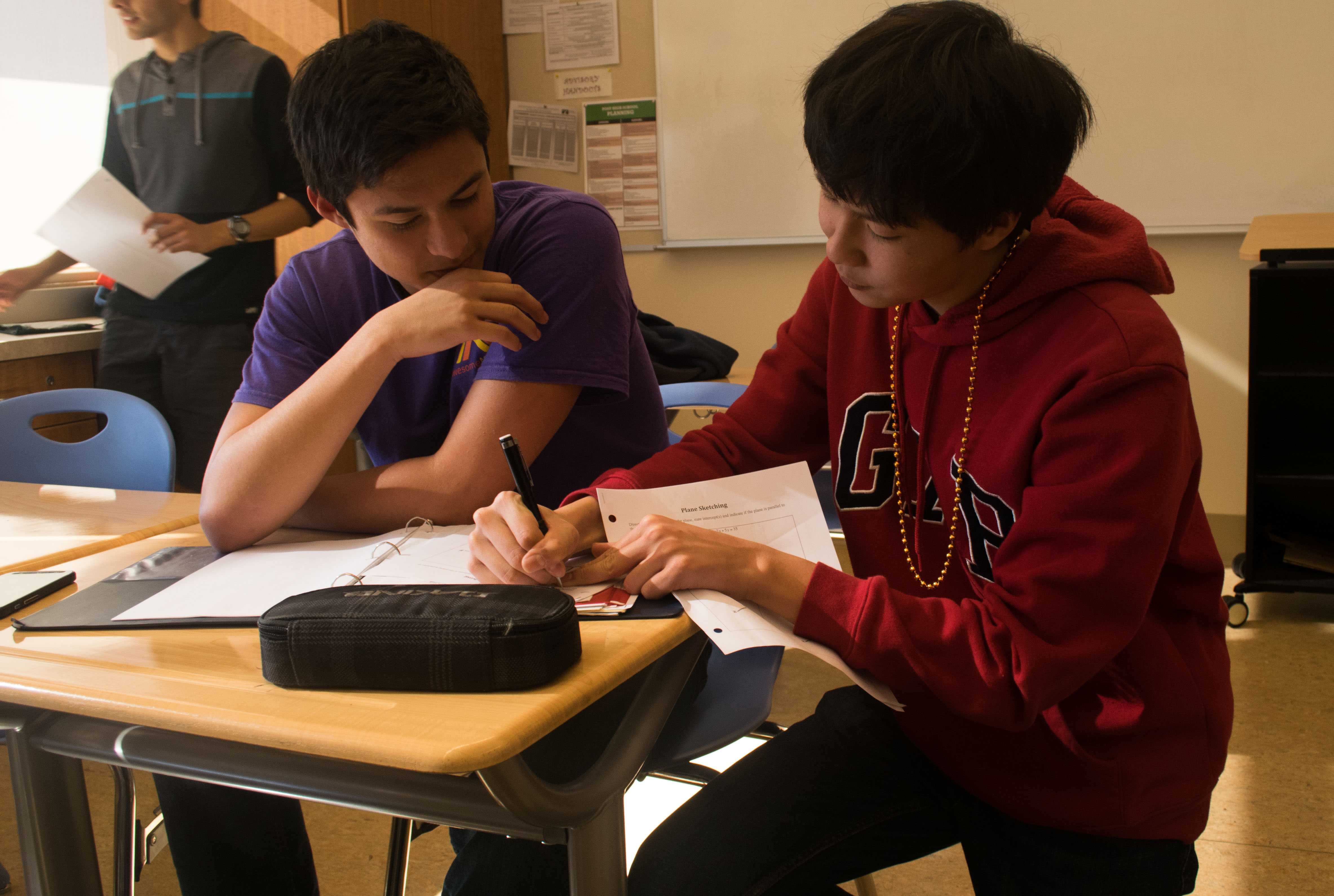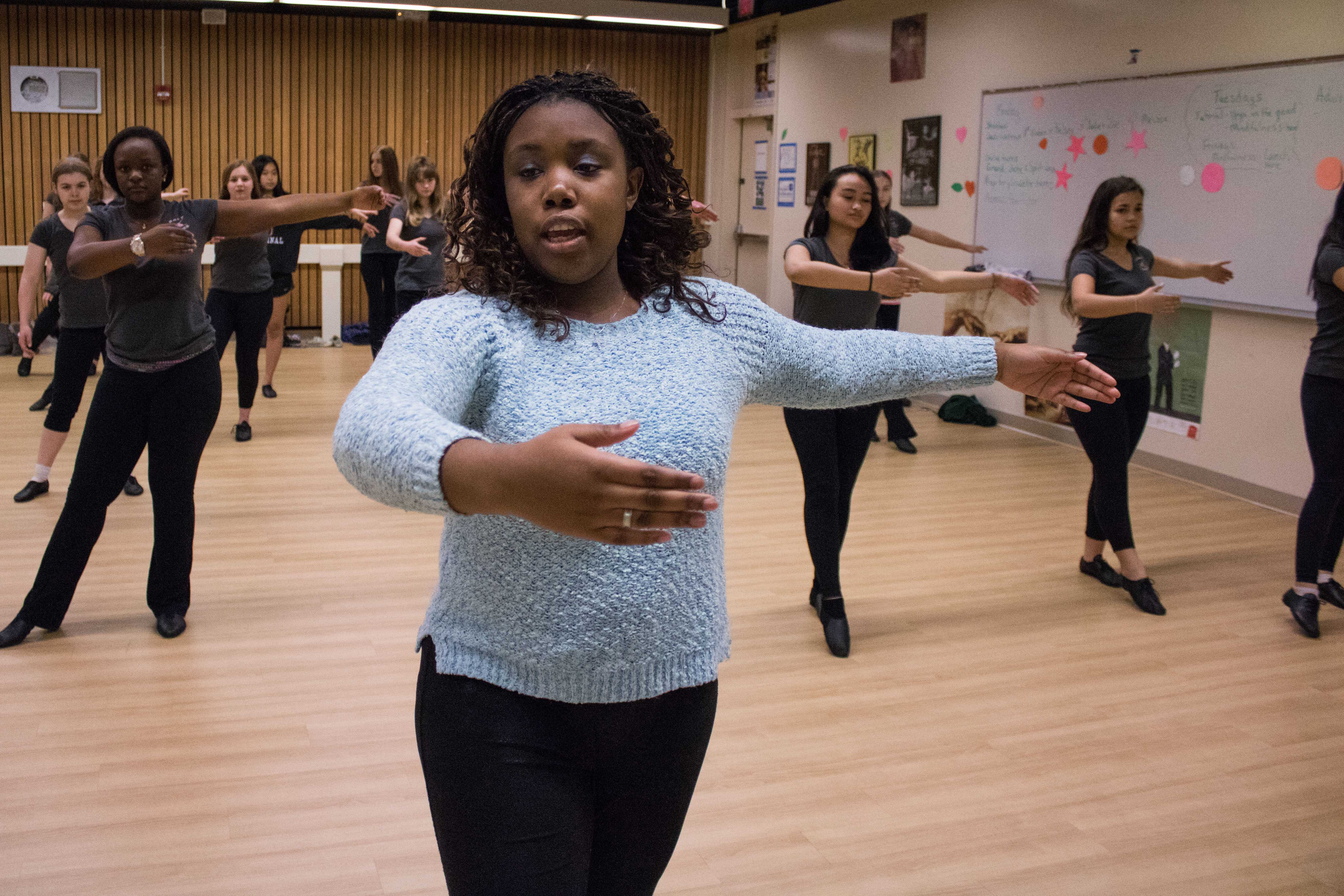“I want you and the people around you to come up with a list of at least 10 things you know about Echinoderms,” Palo Alto High School Senior Sylvia Targ calls to her fifth period Marine Biology class as she looks through slides for her presentation later that class.
As the students begin to form their lists, Targ prompts them with questions: “What do they look like? Have you ever seen one of them? What might they taste like?” Then, she writes down each group’s answers on the board. To an outsider, Targ would appear to be a regular teacher, with one exception: she is the same age as most of her students.
Targ is enrolled in Teaching Practicum, a class that provides students with an opportunity to assist teachers and practice teaching a few lessons themselves. For one quarter, the students shadow a selected teacher. Then, they are required to teach at least one lesson per quarter, as well as attend bi-monthly seminars during Tutorial, where they learn about teaching. This class of around 20 students differs from the Teaching Assistant course because the students interact with classes personally, as opposed to acting as administrative aides.

The Teaching Practicum course is especially necessary now, as the U. S. Department of Education has projected a shortage of teachers in the future and Teaching Practicum teacher Elizabeth Brimhall believes that it is important to nurture students interests in teaching.
“The idea of being able to work with students who might be interested in teaching and prepare them for that I think is a great thing,” Brimhall says. “I also think for a lot of students it’s a really wonderful experience to be in a classroom and be able to be mentors for younger students.”
The students enrolled in the course, mostly seniors, earn a year of Career Technical Education credits for taking the elective.
“It’s definitely more attractive to do it with the Teaching Practicum program,” says senior Russell Star-Lack, a Teaching Practicum for Jack Bungarden, who teaches A.P. U.S. History.
According to Brimhall, the seminars address different topics each quarter in order to address different aspects of teaching. The first quarter’s topic is different types of teaching styles and the second quarter is dedicated to examining different types of students. The third quarter is devoted to policy issues facing the entire school, and the year ends with looking at the future of education. In addition, the course has guest speakers come in around once a quarter.
However, the majority of the learning is devoted to being in the classroom.
Bailey Cassidy, Class of 2012, took the Teaching Practicum and Teacher Assistant courses. She now goes to DePaul University in Chicago and is studying to be an Egnlish teacher once she has graduated. Cassidy was a TA and a Teaching Practicum student for English teacher Julia Taylor while she was at Paly.
“I chose Ms. Taylor because I was in her class sophomore year for English and I had a really good relationship with her,” Cassidy says.
For Cassidy, the Teaching Practicum program was not only a fun way to spend a prep period, but also helped her decide what she wanted to be.
“Before I started out in her class, I didn’t really have a favorite school subject or any particular subject that I was interested in,” Cassidy says. “I didn’t realize until I was … teaching her students and having fun with that it [teaching] would be something I’d be good at and enjoy.”
The opportunity to teach a lesson each quarter helped her decide how she wants to structure her future classes.
“I will try to do like one history day at the beginning of a unit or a book, and try really hard to make all the other days discussion based,” Cassidy says.

TA vs. Teaching Practicum
According to Brimhall, the most common question about the Teaching Practicum course is how it differs from being a teacher assistant, or TA. Students doing each role agree that their jobs are very different.
For example, in the History Department, Lydia Miller is a teacher assistant for AP Psychology and world history, taught by Christopher Farina.
“I grade a lot of quizzes, I run a lot of scantrons,” Miller says. “AP Psychology does this thing where students answer questions and they write their student ID at the top, so I search the IDs, write the name.”
Star-Lack also grades many papers, but feels that the lesson each quarter is what really sets the two positions apart.
“There’s kind of two main parts, mostly I do what a T.A. would do which is grading … an unfathomable amount of APUSH quizzes,” Star-Lack says. “The other part is you’re required every quarter to teach a lesson.”
In the English Department, the role of a teaching assistant is much smaller than that of a teacher practicum, and is more directly involved in helping the teachers.
“The T.A. isn’t participating in lessons or helping run a game or a lesson,” Paly English teacher Erin Angell says. “They’re more sort of like an admin assistant. So they do things like alphabetize, they go get stuff from the front office for me, they deliver notes for me … it’s incredibly helpful.”
In contrast from the TA program, Angell views the Teaching Practicum program not so much as a program for students to be assistants, but rather as a way for teachers to mentor future teachers. Angell thinks the course is a great way to nuture student’s love for teaching.
“It wasn’t a hindrance or extra work, but it wasn’t about it being helpful to me as a teacher,” Angell says. “It was like I’m helping somebody who wants to be a teacher later.”
Junior Jerry Hong, a math Teaching Practicum student agrees there is a very distinct difference between being a Teaching Practicum student and a TA. Hong says the classes have some similarities.
“TAing is mostly grading homework and assisting your teacher in terms of inputting grades,” Hong says. “Teacher Practicum, you don’t really get access to the grades, but you do get to personally help the kids. They’re two pretty distinct things, [but] you’re helping the teacher in both cases.”

In both classes, the students agree that helping a teacher is worthwhile. They are not sure if they want to be teachers, but the class has opened up the possibility.
“When you hand your teacher a stack of alphabetized scantrons and they tell you that you’re awesome, it means the world to you,” Miller says. “You feel needed and not worthless.”

